What is brand personality? It’s what makes your business human in the eyes of your customers. Communicated through tone of voice, visuals, and even customer service policies, brand personality can be expressed in anything you do that lets people know what the experience is like to be your customer.
Here’s why it matters in a nutshell:
If your brand doesn’t have personality characteristics, people are going to have a much harder time figuring out that you’re the one for them.
Think about the last time you became friends with someone new. No doubt you were drawn to certain personality traits: maybe they were funny, intelligent, kind, or something else. We like certain characteristics in other people, and we all have different preferences for qualities we find attractive in others.
It’s no different with brands! People purchase things from brands they like and relate to, it’s really just that simple.
If they don’t have a clear sense of you and what you’re like, they may just keep on scrolling. Inconsistent and generic brand messages with no real strategy or intention behind them aren’t going to get you anywhere, there’s just too much noise competing for your dream customers’ attention. But…
When you define your brand personality and communicate it consistently, you’re sending out signals that will attract your ideal customers and giving them a reason to choose you.
This is one of the most FUN aspects of branding and it’s quite simple too. Even if you don’t feel 100% clear about what it is yet, we’re going to break it down in this post. Let’s start by defining what brand personality is and then dive into the frameworks you can use to help you define yours.
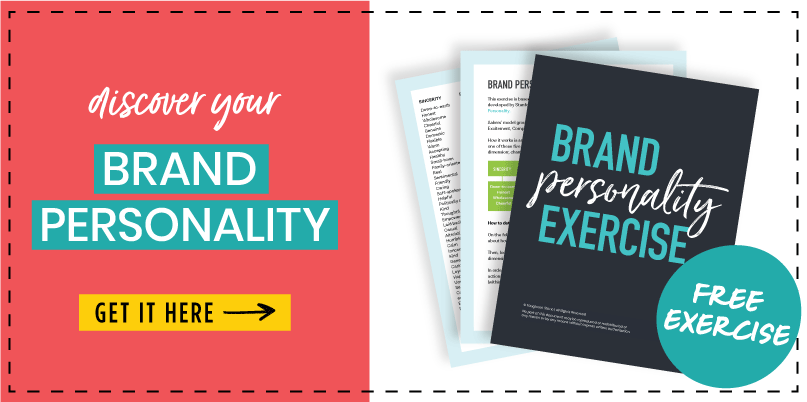
Brand Personality Definition
Brand personality refers to human characteristics associated with a brand. They’re usually expressed as adjectives that convey how you want people to perceive you.
For example: cheerful, youthful, dependable, friendly, responsible, sophisticated, and so on.
We can also think about brand personality in terms of demographic characteristics like gender, age, and social class.
For example:
- If Harley Davidson were a person? It would be a man. Victoria’s Secret? A woman.
- Apple would be a young, hip, creative and Microsoft would be a mature professional.
- Chanel would live in a mansion and TJ Maxx would live in an apartment.
Once you begin to think about your brand as a person with unique personality traits, you’ll be better able to connect with your humans — the customers you want to attract — on a more emotional and personal level.
And that’s important because emotion is what drives decision-making, and that includes purchasing decisions.
Think about Apple customers…
You know there’s no point in arguing the merits and benefits of purchasing a PC. For them, there is no substitute. Buying an Apple product says something about them.
Apple’s brand personality enables its customers to express themselves–the ideal version of themselves–through the use of their brand.
So think about who your dream customer aspires to be and then consider how your brand helps them become that.
Why Brand Personality is Important
- Brand Personality Helps You Break Through the Noise to Capture Attention
Always remember that your dream customers have an infinite number of options for things to pay attention to every single day.
Even just scrolling through social media and checking their email, they’re bombarded with hundreds and thousands of messages. Then they’ve got a to-do list a mile long that they can never seem to get to the bottom of: they have to run to the grocery store, drop the kids off at soccer, schedule an appointment for Lasik surgery, fix the squeaky door hinge and on and on.
Busy, overwhelmed, and distracted… they simply can’t pay attention to every little thing that crosses their field of vision. Emails have to go unopened, social media posts quickly scrolled past, videos get assigned to the “(will never) watch later” list…
With that in mind, it’s easier to understand why a differentiation strategy is so crucial. You need to break through all that noise and get their attention, and one of the best ways to do it is by expressing your unique brand personality.
That is, if they like you… they’ll be exponentially more likely to pay attention.
When you have a clear and consistent brand style and voice (which starts by defining your brand’s personality traits), you shorten the time it takes for people to recognize, remember, and pay attention to you.
2. Brand Personality Helps DIfferentiate You & Drives Consumer Preference
Your dream customers are also comparing you to what your competitors have to offer, and if they can’t tell the difference, they’ll probably choose the one with the lowest price.
Humanizing your brand is one way for you to distinguish yourself from your competitors as something more special and valuable than what others are offering.
[click_to_tweet tweet=”We humans like to think we’re logical, but never forget that it’s emotions that drive your customers’ decision to choose you.” quote=”We humans like to think we’re logical, but never forget that it’s emotions that drive your customers’ decision to choose you.”]
3. Brand Personality Helps You Tell Your Brand Story
At the core of your brand story are the reasons why your customers should care about you.
- What do you stand for?
- What are you here to contribute to your tiny corner of the world and the people in it?
- How do you do business differently than your competition?
- What is the experience like to work with you?
The personality characteristics you choose to focus on must be rooted in your larger brand strategy.
Humans (and brands) all have underlying beliefs, values, core principles that guide them.
Personality traits — the things we perceive on the surface — give us insight into who people are deep down.
Brand personality is really about personifying your brand in a way that has meaning to the people you wish to attract
How to Define Your Brand Personality – 3 Frameworks
There are two main approaches to defining your brand personality, and a third method combines the first two. There is no right answer — choose the one that makes the most sense for you.
Personally, we use the first method but many of our branding colleagues use the second.
The important thing to remember is your goal: to create a consistent tone of voice in your messages and to create a visual identity that’s in alignment with your personality. If you can do that, how you approach it doesn’t really matter.
Framework #1: Aaker’s Brand Personality Dimension Framework
We always find it’s helpful to use a framework and luckily, a Stanford researcher named Jennifer Aaker in her paper Dimensions of Brand Personality created one for us and it’s a great starting point.
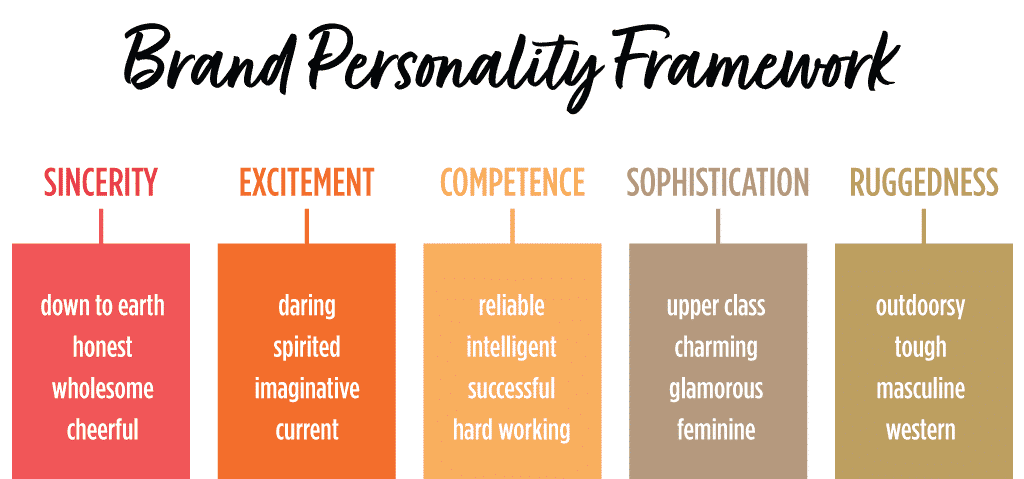
Aakers’ model groups brand personalities into five broad categories:
- Sincerity
- Excitement
- Competence
- Sophistication
- Ruggedness
You want to pick 3-5 adjectives (personality traits) you want to “own” when somebody thinks about your brand.
The adjectives (traits) you choose will fall under one of these five personality dimensions. For example, daring or adventurous go under excitement. Charming and feminine fall under sophistication and so on.
This simple framework can help you distinguish your brand from your competitors.
For example, if you’re a virtual assistant, your main competitors may focus on competence — they’re all about reliability, hard work, and responsibility.
You might position yourself as the one who’s sincere – cheerful, casual, and relatable.
Yes, of course, you’re also reliable, hard-working and responsible… it’s about choosing specific traits you’ll put forward and lead with.
Choosing specific qualities to focus on (rather than every trait you possess, the complex human creature that you are), allows you to create a powerful value proposition:
“I’m the one that’s __________.”
Being able to fill in that blank means you’ve provided your potential customers with a clear and easy-to-understand differentiator and they’ll be able to base their choice on the qualities they feel more attracted to and aligned with.
Brand Personality Quiz
Want to have a little fun? I’ve created a free quiz to help you determine which of Aaker’s Brand Personality Dimenions you belong in: Take the brand personality quiz here.
Once You’ve Chosen Your Brand Personality Traits… Then What?
From here on out, rather than calling them “brand personality traits,” let’s use a metaphor that can be really helpful for remembering “how to be” in your communications. We like to call these helpful adjectives “brand anchors.” We’re visual people and this helps us burn it into our subconscious that we’re supposed to actually do something with these words:
Everything you do, say, write, share and even how you present yourself (your brand visuals) should be “anchored by” these adjectives.
The graphic below represents the way we approach branding and how we anchor these characteristics to everything we say, create, and do. This little metaphor helps us to be consistent.
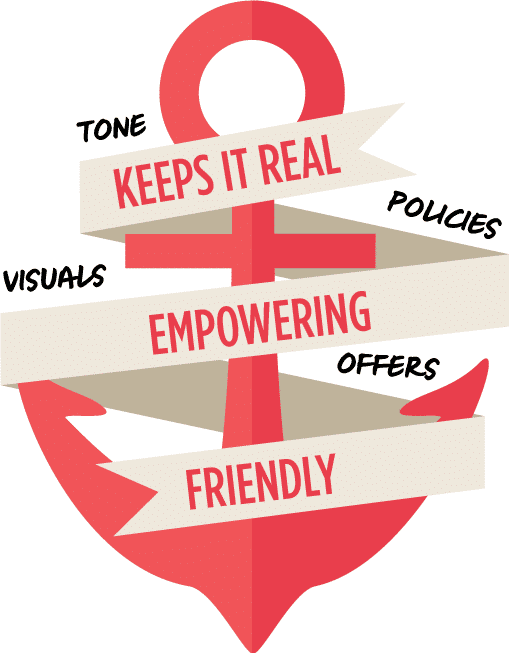
Brand Anchor Example
Using Aakar’s framework, we clearly fall under the “sincerity” category. We’re not wild and zany, or tough and rugged, and unfortunately, we’re not glamorous or fancy. And while we like to think of ourselves as intelligent and hard-working, we don’t quite qualify for the “competent” category — which doesn’t mean we’re not competent, it’s that we don’t lead with that quality.
Because a lot of our customers have described the process of working with us as approachable, we wanted to convey friendliness in our visual brand. For example, rather than corporate blue (always appropriate for a ‘competent’ brand) we use bright, warm, and fun colors in our brand visuals. Cheerful, but not so over-the-top as to spill over into the “excitement” category.
Framework #2: Brand Archetypes Framework
Another way to personify your brand is to choose an archetype. This is a model based on Carl Jung’s theory that people tend to use symbolism to understand concepts. He defined 12 archetypes that represent different groupings of characteristics, aspirations, values, and attitudes.
The question to ask yourself is, which one of these identities will YOUR dream customers relate to most?
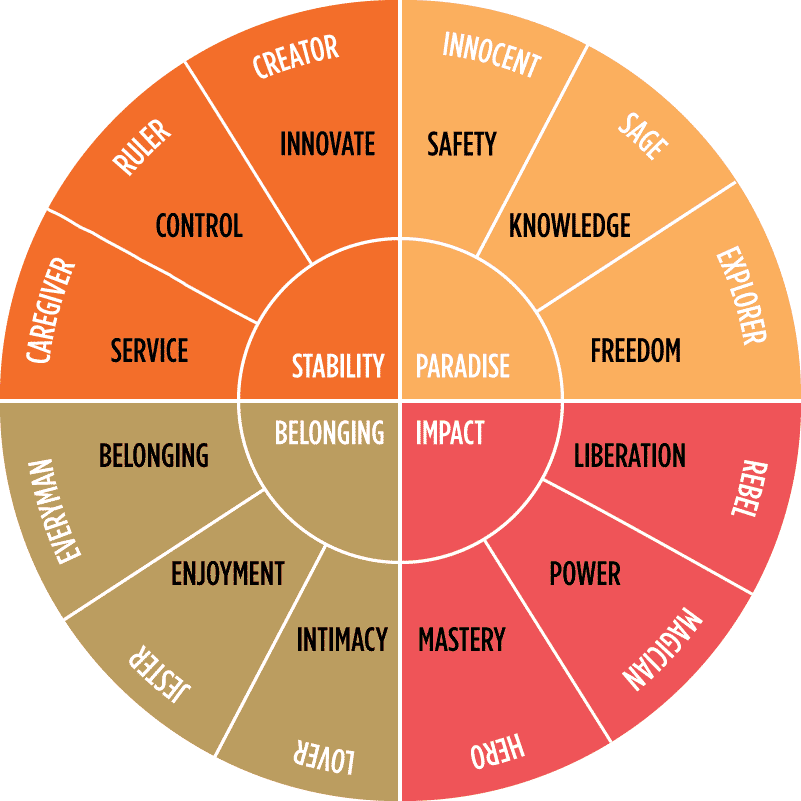
The Social Types
want to connect with others
THE REGULAR GUY/GAL
Goal: To fit in
Wants their customers to feel a sense of belonging
Traits: Casual, down-to-earth, folksy, guy/gal next door, supportive, solid virtues, real, democratic, equality, community, lack of pretense
Famous examples: IKEA, Visa, Levi’s
THE LOVER
Goal: Intimacy
Wants their customer to find love and connectionTraits: Romantic, sensual, passionate, warm, intimate, giving
Famous examples: Chanel, Victoria’s Secret
THE JESTER
Goal: to enjoy life
Wants their customers to have more joy and laughter in their daily lives
Traits: Fun, light-hearted, quirky, zany, irreverent, humorous, enjoyment, never boring
Famous examples: M&Ms, Skittles
The Order Types
want to give the world structure
THE CREATOR
Goal: To innovate
Wants their customers to believe in what’s possible
Traits: Imaginative, creative, artistic, entrepreneurial, inventive, non-conformist, visionary, innovative, non-conforming
Famous examples: Adobe, Crayola Lego
THE RULER
Goal: Control (in order to lead)
Wants their customers to feel more organized, stable, secureTraits: Organized, leader, role model, responsible, controls the chaos, boss
Famous examples: Microsoft, Mercedez-Benz, Rolex
THE CAREGIVER
Goal: To serve others
Wants their customers to feel understood and protected
Traits: Maternal, generous, compassionate, caring, nurturing, parental, empathy, selfless
Famous examples: UNICEF, Johnson & Johnson, Heinz
The Ego Types
want to change the world
THE MAGICIAN
Goal: Power (to make magical things happen)
Wants to make their customers’ dreams come true
Traits: Inspirational, idealistic, charismatic, visionary, imaginative, spiritual
Famous examples: Apple, Disney
THE HERO
Goal: Mastery (in order to make the world a better place)
Wants to help their customers: by rescuing them from their troublesTraits: Bold, honorable, confident, strong, courageous, inspirational
Famous examples: Nike, FedEx
THE REBEL
Goal: Liberation
Wants to help their customers break free from the status quo, overturn what’s not working Traits: Wild, change-maker, rebellious, rule-breaker, revolution, edgy, misfit, outrageous, radical, free, disruptor, shocking
Famous examples: Harley Davidson, Virgin
The Freedom Types
want to find paradise
THE INNOCENT
Goal: Happiness Wants to help their customers feel great on the inside
Traits: Positive, kind, good, pure, simple, young, loyal, optimistic, trustworthy, moral, reliable, honest, good virtues, nostalgic, sees the good in everything, faith, does the right thing
Famous examples: Coca-cola, Dove
THE EXPLORER
Goal: Freedom
Wants to help their customers have new experiences, adventures, discoveriesTraits: Adventurous, independent, pioneering, individualism, wanderlust
Famous examples: REI, Corona, The North Face
THE SAGE
Goal: To understandWants to help their customers by sharing knowledge
Traits: Wise, visionary, knowledgeable, intelligent, trusted source of information, thoughtful, mentoring, advisor, guru
Famous examples: Oprah, Google, NPR, Quora
Framework #3: Combo of Personality Dimensions & Archetypes Frameworks
By now you’re probably wondering if you can combine these two methods. It just so happens that some researchers set out to do just that! In Advertising between Archetype and Brand Personality, the authors combined Aaker and Jung’s work and the result turned out like this:

The personality traits and dimensions they chose were subjective, so this means if you want to use an archetype and combine it with some brand anchors, you can create your own framework to follow. Just use your best judgment when choosing the traits that fit your archetype.
Embracing Your Brand Personality
An important thing to remember is that these exercises intend to help you create a consistent voice and style so people can understand what you’re about and connect with you on a deeper level.
But it’s not about strategizing ways to trick people into believing something about you that’s just not true and that’s not necessary anyway. Your greatest competitive advantage is there’s only one YOU. It’s just that people tend to see their personality traits as “flaws” and they downplay them.
Want a winning brand personality? Be who you actually are.
What do they do instead? They look around at what everyone else is doing and copy it. This tendency is called social compliance and you must resist following what everyone else is doing if you want to stand out.
Maybe you’re…
- Adventurous and spirited but you’re a financial planner, so you think you need be corporate, responsible, dependable.
- Sophisticated and feminine but you work in tech so you think you need to be tough and masculine.
- Down-to-earth, warm, and laid-back but you’re in fashion so you think you need to be glamorous and refined.
Branding is not trickery. It’s about showing up as authentically as you can so people know what to expect.
Now let me ask you this:
- Who do you think adventurous and spirited people would rather work with when they need a financial planner?
- Who do you think sophisticated women will want to work with when they need technical expertise?
- Who do you think laid-back people will choose when they need fashion advice?
The beautiful silver lining about having so much competition these days is that you have a huge opportunity to get narrow and worry only about finding your people. They notice us when we’re showing them exactly who we are.
[click_to_tweet tweet=”People like to work with people they like and relate to. Your people will get you, so don’t try to be something you’re not — that’s only going to backfire and attract the wrong people to you.” quote=”People like to work with people they like and relate to. Your people will get you, so don’t try to be something you’re not — that’s only going to backfire and attract the wrong people to you.”]
How To Communicate Your Brand Personality
Now that you’ve chosen your personality traits, you need a strategy to communicate that personality with consistency. You’ll do that in three ways:
- Visual Identity: This is your logo, your fonts, your color palette, and the image and design style used in your marketing materials.
- Brand Voice: This is your tone of the language you use–how you say things; the words you use and the ones you don’t.
- Actions: Basically, everything you do contributes to your customers perceiving you in one way or another, make sure your actions are intentional and in alignment with the personality you define.
Visual Identity
Once you have your brand anchors, you can make choices about your visuals–your graphics, brand colors, and so on—so they’re in alignment with the traits you want to become known for. They include…
Brand Voice
Your brand anchors can also help you create a consistent tone of voice in your brand copy and marketing messages, including…
- Naming strategy
- Tagline
- Tone of Voice
- The words you’ll use and the ones you won’t
- Editorial guidelines
Actions
This is where people fall off when it comes to branding–thinking that their brand visuals and voice are all that’s required. But keep in mind that people’s perceptions of you are largely based on experience. Your actions are brand promises fulfilled. How will you walk the walk in your…
- Customer service policies
- Product and service offerings
- Processes — onboarding, offboarding, etc.
Your brand personality is the promise, but you must live up to it in everything you do. The idea is that when your work together is through, people will automatically describe you with the same personality characteristics you defined in your brand strategy.
Brand Personality Examples
Let’s take a look at the Aker’s Brand Personality Dimension exercise to see some famous brand personalities in action.
SINCERITY
When you fall under the sincerity dimension, you’re down-to-earth, honest, cheerful and genuine. People appreciate your generous, helpful, and caring nature.
This happens to be our brand personality dimension. We wish we had fallen under “excitement” (ha!) but the reality is, the way we are with customers is more in alignment with qualities like empowering, friendly, unpretentious and “no bs” — that’s based on feedback they’ve given us, not just some adjectives we pulled out of a hat.
That’s why this exercise can be so helpful… sometimes we don’t always recognize our own strengths and qualities and how others perceive us the frameworks give us a starting point.
Oh, and another famous brand that falls under this category is APPLE. You may think they belong in the “excitement” category with the visionaries and change-makers, but they’re actually all about empowering their customers to unleash their creativity. HELPFULNESS is the more dominant characteristic.

EXCITEMENT
If you’re a change-maker and a visionary, chances are you fall under the EXCITEMENT category. Excitement brands are daring, charismatic, spirited, imaginative, passionate and creative.
When you. think of creative vision and imagination, you can’t help but think of DISNEY!

Or how about TESLA? Tesla is a brand that’s out to disrupt the car industry to be the “world’s first genuine green car brand.”

COMPETENCE
When your brand dimension is COMPETENCE, you’re the one people depend on. You get things one and you’re reliable. We want our doctors, lawyers, plumbers and car mechanics to be competent and dependable above all else.
One of the most famous brands that falls under this category is Microsoft.

SOPHISTICATION
Sophisticated brands inspire a sense of luxury, prestige, femininity and high class. Many personal brands fall under “sophistication” — think lifestyle bloggers, beauty gurus, and even graphic designers who have an elegant aesthetic. Think Audrey Hepburn
The famous brand that first springs to mind in the sophistication category is Chanel.
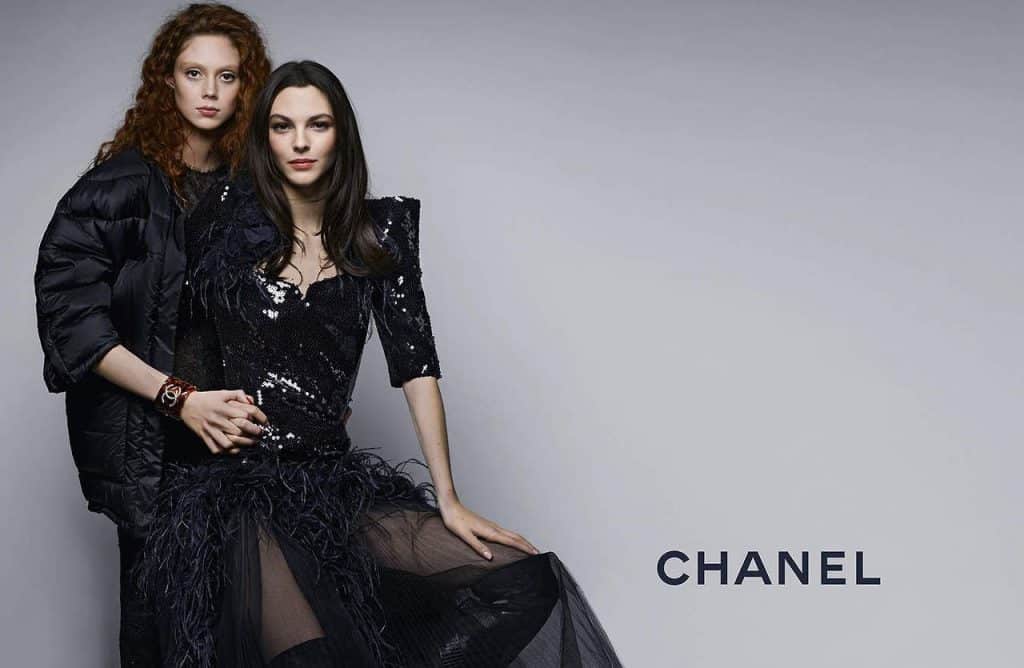
RUGGEDNESS
These are the outdoorsy, adventurous, masculine and sporty brands. While usually reserved for B2C brands, you’ll also see personal trainers, life coaches and other consultants with a rugged personality. It’s definitely a great way to set yourself apart!
Think JEEP, Harley Davidson, or REI… we ADORE that one of their biggest campaigns is to promote the CLOSING of their business on Black Friday to encourage their customers to get outside.

In Summary
The real magic happens when you convey a consistent personality in your branding — your brand voice, visual identity, and even your actions. WIth consistency, people start to “get to know you,” which leads to trusting and choosing you.
Having a distinct personality means you’re not just some anonymous, generic company offering the same things a lot of other companies are offering. You become known and remembered as the one that’s ________[insert personality traits here].
Don’t forget to grab our Brand Personality Exercise below to discover yours or take this fun brand personality quiz!

Was this helpful? Have a question? Hit us up in the comments!


Hi Taughnee, I love the idea of the brand anchors and how they work after you discover the brand personalities.
Thank you for this in-depth article for us to work on brand personality and anchors to improve our branding and businesses.
You are so welcome, Lisa! I’m glad you found it helpful. Happy branding! 🙂
Hi Taughnee,
Amazing post! It is very important to personify your brand as it makes it easy for people to resonate with it. You also rightly quoted that it helps to distinguish your brand from your competitors.
This was extremely helpful and enlightening. I really enjoyed this read. THANK YOU!
You are so welcome, Alyssa! 🙂